16 Types of Container Units and Designs for Shipping Cargo
Table of Contents
Container units form the most integral part of the entire shipping industry, trade, and transport. These shipping containers store various kinds of products that need to be shipped from one part of the world to another via different types of container ships.
Moving containers protect contents on their long journeys and ensure they make it back to you in one piece.
Depending on the type of products to be shipped or the special services needed, container units may vary in dimension, structure, materials, construction, etc. Various shipping containers are being used today to meet the requirements of all kinds of cargo shipping.
Some of the most common types of shipping containers in use today are mentioned below.
1. Dry storage container
The most commonly used shipping containers; come in various dimensions standardized by ISO. They are used for shipping dry materials and come in the size of 20ft, 40 ft and 10ft.
2. Flat rack container
With collapsible sides, these are like simple storage shipping containers where the sides can be folded to make a flat rack for shipping a wide variety of goods.
3. Open top container
With a convertible top that can be removed to make an open top, materials of any height can be shipped quickly.
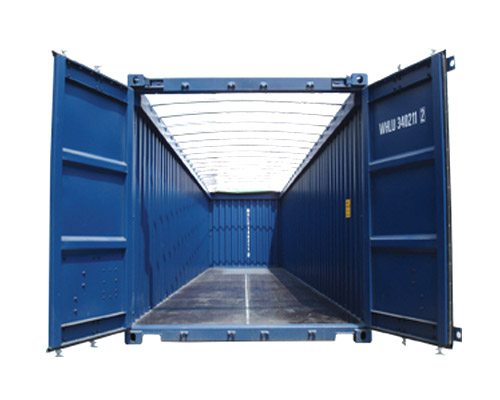
4. Tunnel container
Container storage units are provided with doors on both ends of the container, helping to load and unload materials quickly.
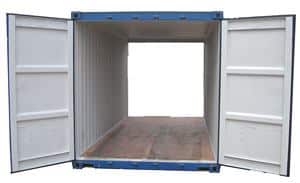
5. Open side storage container
These storage units have doors that can change into open sides, providing a much wider room for loading materials.
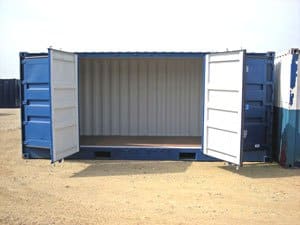
6. Double doors container
They are a kind of storage unit with double doors, making a wider room for loading and unloading materials. Construction materials include steel, iron etc., in standardized sizes of 20ft and 40ft.
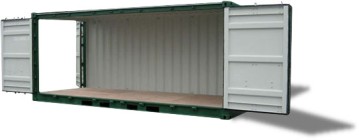
7. Refrigerated ISO containers
These are temperature-regulated shipping containers that always have a carefully controlled low temperature. They are exclusively used to ship perishable substances like fruits and vegetables over long distances.
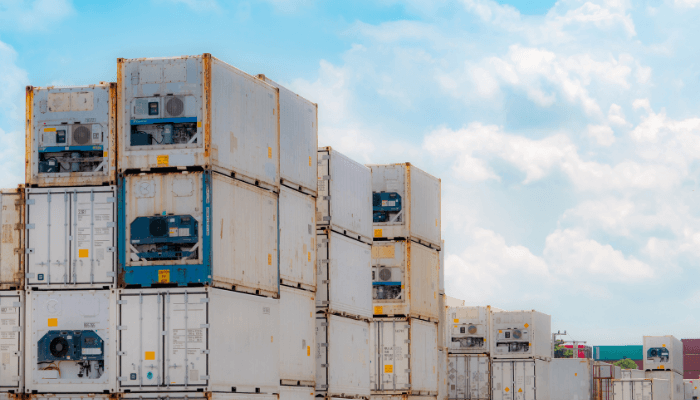
8. Insulated or thermal containers
These are the shipping storage containers with regulated temperature control to maintain a higher temperature.
The choice of material is so made to allow them a long life without being damaged by constant exposure to high temperatures. They are most suitable for long-distance transportation of products.
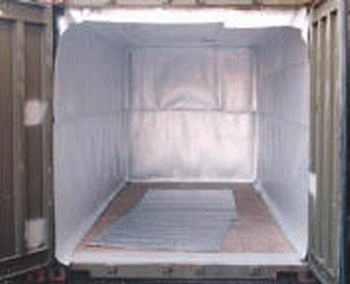
9. Tanks
Container storage units are used mainly for the transportation of liquid materials; they are used by a considerable proportion of the entire shipping industry. They are mostly made of strong steel or other anti-corrosive materials, providing them with long life. They also offer the best protection to the materials stored in them.
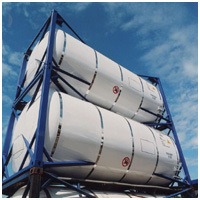
10. Cargo storage roll container
A foldable container is one of the specialized container units made to transport sets or stacks of materials. They are made of thick and robust wire mesh along with rollers that allow their easy movement. The availability of a range of coloured wire meshes makes these shipping container units a little more cheerful.
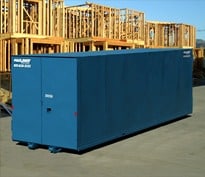
11. Half-height containers
Another kind of shipping container includes half-height containers. Made primarily of steel, these containers are half the height of full-sized containers. Used primarily for goods like coal, stones etc., which need easy loading and unloading.
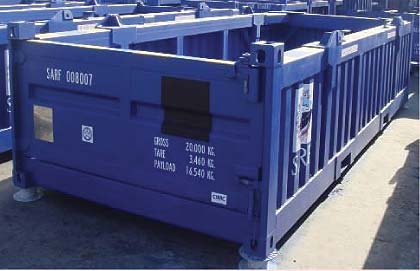
12. Car carriers
Car carriers are container storage units made especially for transporting over long distances. They come with collapsible sides that help a car fit snugly inside the containers without the risk of being damaged or moving from the spot.
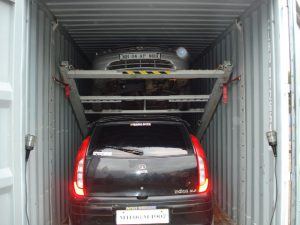
13. Intermediate bulk shift containers
These are specialized storage shipping containers made solely for the intermediate shipping of goods. They are designed to handle large amounts of materials and are made for shipping materials to a destination where they can be further packed and sent off to the final spot.
14. Drums
As the name suggests, circular shipping containers are made from steel, lightweight metals, fibre, hard plastic etc. , are most suitable for bulk transport of liquid materials. They are smaller but may need extra space due to their shape.
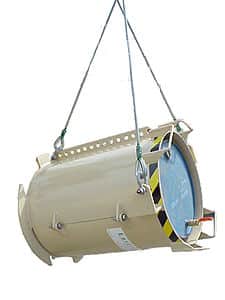
15. Special purpose containers
Not ordinary containers; these are container units custom-made for specialized purposes. Mainly, they are used for high-profile services like the shipment of weapons and arson. Their construction and material composition depend on the particular purpose they need to cater to. But in most cases, security remains the top priority.
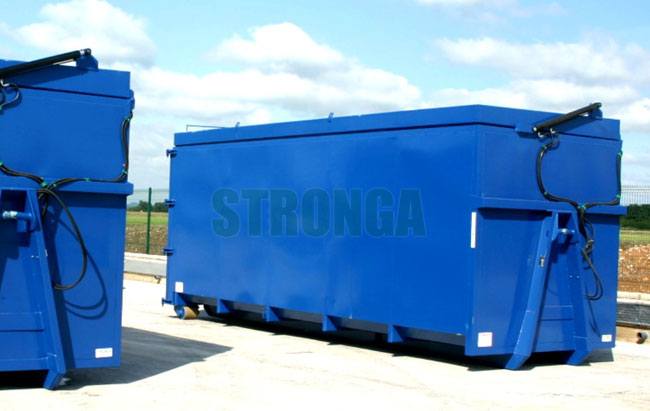
16. Swap bodies
They are a special kind of container used mainly in Europe. Not made according to the ISO standards, they are not standardized shipping container units but are extremely useful. They are provided with a firm bottom and a convertible top making them suitable for shipping many products.

Frequently Asked Questions
1. Why are containers used onboard ships?
Containers are used for transporting cargo via sea to far-off locations. Since it is an expensive affair, saving space onboard container ships is essential for transporting as many goods as possible. Containers are of many types, depending on the type of goods shipped. They ensure the safety of the cargo and can be stacked on top of each other; hence, they are also very convenient.
2. Why is there a shortage of shipping containers?
The shortage of containers began with the advent of the Covid-19 pandemic. As soon as WHO declared the covid outbreak a grave pandemic, production declined, and many ships were stranded at ports due to international relations. Hence, the transportation chain was affected, including commodity demand and supply. Ships with empty containers had to remain in ports, creating a shortage of containers in the shipping sector. Also, the covid pandemic led to other issues like port congestion, labour shortages and increasing operating costs.
3. What happens to empty shipping containers?
Empty shipping containers are refilled with cargo and shipped from the port to their new destination. Sometimes, they can be seen piled up at ports and harbours, ready to be used again.
4. Why are shipping containers of different colours?
Different colours are used for shipping containers as a method of identification. Every colour has a different meaning to it. It could be a one-time-use container or could be used for round trips as well. The colour also denotes the type of cargo being carried. Also, for business owners, the colour of the container greatly affects its price.
5. What is the lifespan of shipping containers?
Shipping companies sell old containers once they reach an age of 8 to 12 years and become unusable. They require maintenance to remain at par with international shipping standards. However, repairing them is rather cumbersome. Hence they are sold off, and new ones are used. People who buy these containers use them quite innovatively.
You may also like to read-
- Important Points for Safe Container Lashing
- Container Seals; Importance, Types, And Requirements
- Flat Rack Containers; Types, Specifications And Dimensions
- What Are Insulated Shipping Containers?
- CONEX Containers; History, Dimensions, Features And Uses
- What Are OTop OpenContainers; Design, Specifications and Dimensions
- What are Container Ships- History, Types And Design
References: out-back storage, shipping-container-housing, shipping-worldwide
Do you have info to share with us ? Suggest a correction
Latest Maritime Knowledge You Would Like:

About Author
An ardent sailor and a techie, Anish Wankhede has voyaged on a number of ships as a marine engineer officer. He loves multitasking, networking, and troubleshooting. He is the one behind the unique creativity and aesthetics at Marine Insight.
Get the Latest Maritime News Delivered to Your Inbox!
Our free, fast, and fun newsletter on the global maritime industry, delivered everyday.




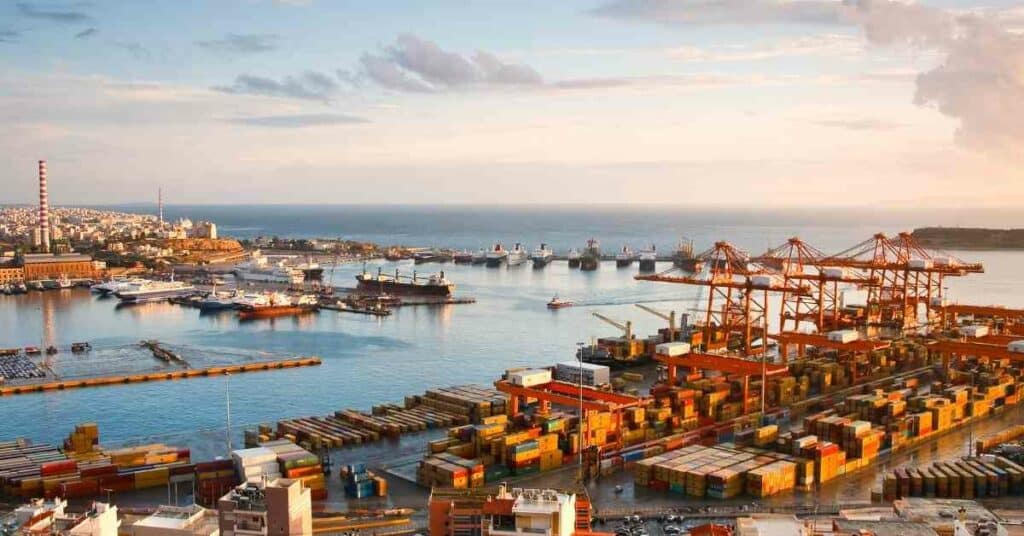

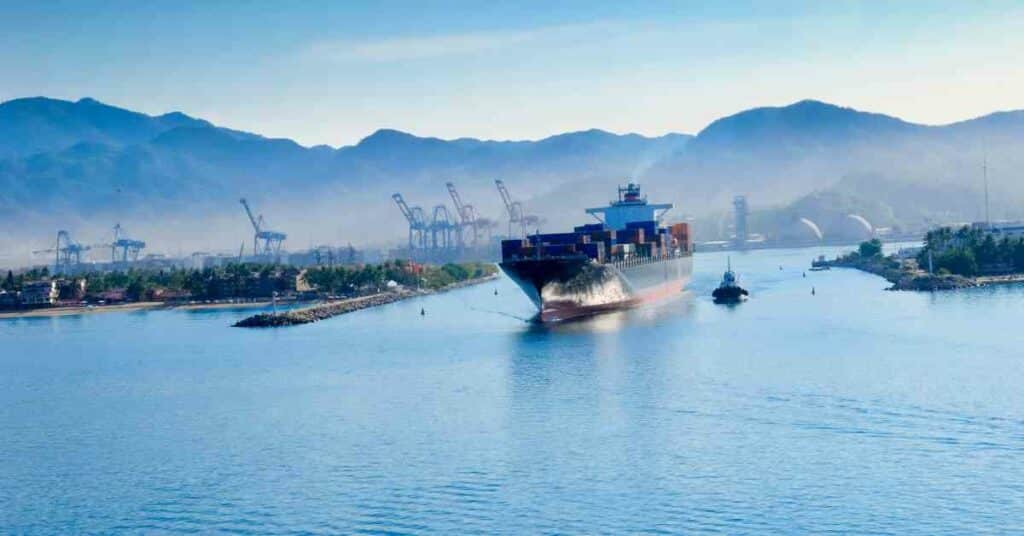

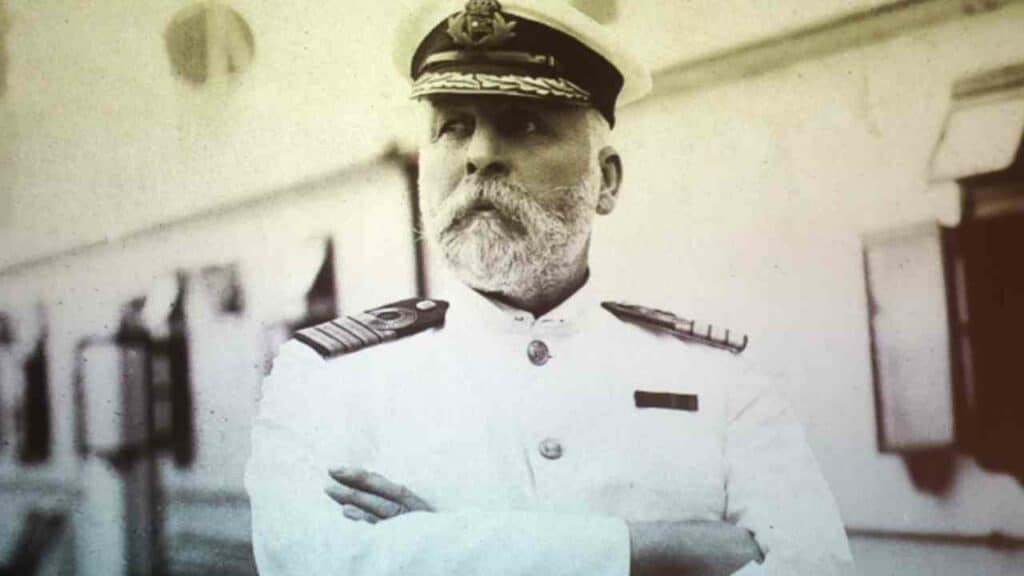
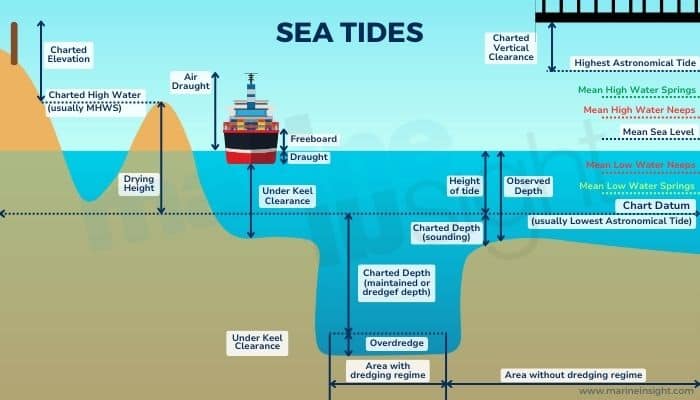
Hi, I am Till now job private containers depot experience of five years. Shipping line is more more large. I will got more known of containers type & parts.
I’m a Marine surveyor in Margarita Island here in Venezuela, US Citizen, and looking at your Web Site was impressed by Your Marine Container List,
How can I get a copy of it. I have tried to download or copy without any success.
Please Advise
Sincerely
GCA
Bs/BBA/MBA
Thanks Smita for this really great sharing! Love the compact information you provide here for everyone!
Hi
I have a goods delivery note for my equipment that are shipping in our factory. In this file has been mentioned 2*40’FF for shipping kind of equipment. Could you tell me what is the meaning of FF abbreviation?
Thanks
Dear Hamzeh,
You might be receiving your equipment in a 40 foot Flat rack shipping container. Check the link for more details- https://goo.gl/PE1CU0
Dear Anish
Hi
Thanks for answering my question. It was really helpful.
I need to ship the Man truck head and some cars need help with that .
First time shipper.
Hi,I am a master mariner with 20 years sea life experience,your provided data are really useful for guys new in this job as well as students,thanks a lot and wishing you all success.
Nice to see here for your useful sharing for everyone,thanks,please if any shipping job is available all over the world just intimate brother,basic levels of job also ok.
Nice…allright…
Good information.
Thank you Very much.
sir may i know which are the containers are used for export of agriculture commodities such as fruits , vegetables, seeds , fertilizers etc.
@ Arvind:
Normally reefer containers are used for perishable goods.
I am studing clearing and forwading and is my first year so i need your help to me my people to reach my goals pleaze
This platform is really helpful
Dear sir/ madam,
Hello I am in 3rd sem of MMS marketing course . and my working experience in real estate market as purchase and sales it is possible to get job in export import dept .
There are many shipping containers that serve different purposes. It’s common knowledge that shipping containers come in different sizes, the most common being 20′ and 40′ containers; what many people don’t think about is that there are several types of shipping containers, each designed for different uses. This is very helpful. Thanks for the additional information.
the Insulated or thermal containers, are they used for the purpose of transporting goods that will not fair well with high temperature? The note says that they are design to maintain high temp.
Thanks for good information. What are the 3D dimensions of all the containers you mentioned? Please reply or forward link. Thanks
Ned
I often go walking around the harbor. There is a large dock where a lot of the shipping occurs. I am always amazed with how many different shipping containers there are. I didn’t realize that there are insulated containers that regulate temperature control to there is no damage to sensitive materials. I’ll remember that next time I go for a walk.
Thanks for the information on the many different kinds of shipping units. I am really interested in shipping a car from Japan to the United States and have been thinking about which containment unit would be best for the job. I honestly might just use a large shipping crate and tie it down inside so that it does not bounce around. Thanks for the help!
Need 3 containers for office purposes.
Thanks for sharing these good information. These 16 types of container really useful during any kind of shipment.Like packing vehicles and others thing for safe shipment. Keep sharing such kind of useful things.
Nice blog. Worth reading. shipping containers can be used for multi purpose depending upon their size, type and your requirements. Thank you so much for sharing this information.
Glad you liked it.
i want to know the length breadth & height of container
Lenght will differ as per the size/ capacity of the container.
TS line has a main purpose to deliver a container to the most of countries.For that we have Shipping Exchange Tracker System to get the real time courier information of your shipment. To check out Refer this: goo.gl/aEc6yr
Fantastic site.. very informative
Thank You, Jhon. Appreciate your support.
Thanks for the information on the many different kinds of shipping units.Thanks to sharing this good information these 16 types of containers.
@Murtuza: Glad the information is useful 🙂
what is FH containers
@Rajesh: A type of Flat rack Container. FH – Flat Bed Trailer with Headboards
Hi, Actually i am searching HC Solid container parts name means how many real parts of 40 feet Solid container parts.
Nice article! In my opinion, There are many shipping containers that serve different purposes. It’s common knowledge that shipping containers come in different sizes, the most common being 20′ and 40′ containers; what many people don’t think about is that there are several types of shipping containers, each designed for different uses. This is very helpful. Thanks for the additional information.
Very useful & interesting article! In regular base will use very few options from above & I don’t think even any body acknowledged these types of shipping containers which are in marine industry, each designed for different end uses. Thanks for the valuable information.
@Dhanushi: Glad the information is useful
Nice Blog!! The content you have shared is very elaborative and informative. Thanks a lot for sharing such a great piece of knowledge with us.
????
I like that you talked about the tunnel container and how it is easy to load and unload items there due to how it can be used. I guess I will be choosing this when we need one for the move that we will have. It will be perfect since we have large items such as the grand piano which might be hard to move.
Superb information. You have covered all types of shipping containers. Shipping containers comes in 6 foot to 53 foot sizes.
I’m trying to ship some pictures and books to Addis Ababa ethiopia it’s about 200 lb what is the best way to ship it on a cargo?
thanks a lot
@Cynthia: ????????
In this article we are know the importance of shipping in our day to day life. Thanks for sharing this article.
Thank you for sharing this information. I am into transport & logistics company.
I would like to receive updates and or your future articles. Many thanks.
very good and clear cut container details & types
May I know the suitable container for cocoa seeds, cashews, and fruits?
never new so many different kinds of container existed and I work in the industry with Lumper HQ
I am third student at University of Johannesburg, the insight shared in this blog is useful keep up the good work.
@Mack: Glad it helped. Please do share and support 👍
👍
What .Meaning in container undar custam seal in for F/BV, CN/CCS , GB-LR, D-HH / GL meaning please tell me